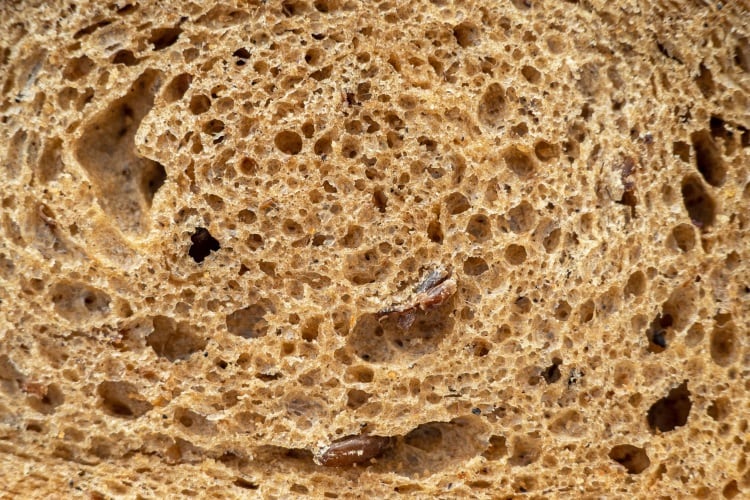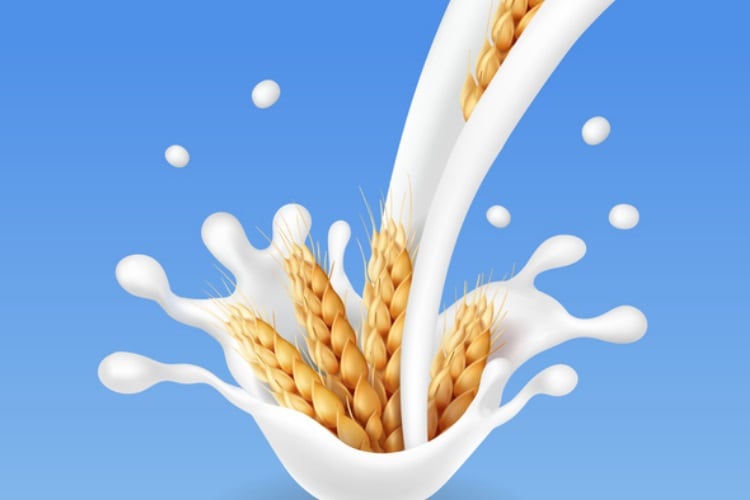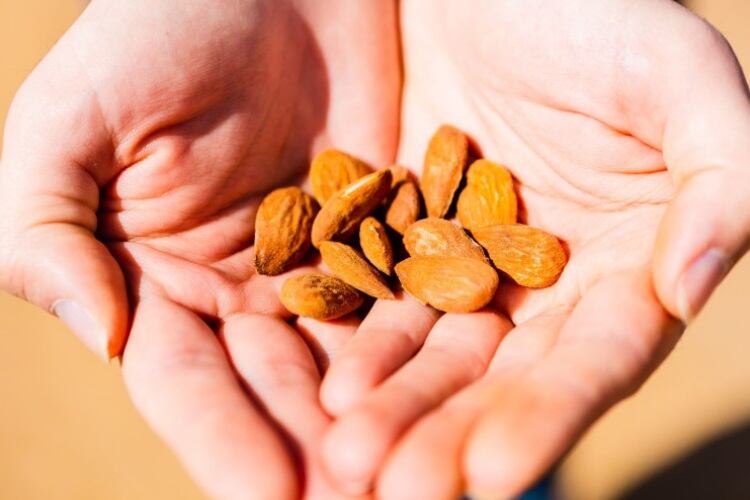The dietary fibre market has grown in recent years, with food manufacturers looking for healthy ingredients to improve the nutritional value of their products. Increasing consumer consciousness towards the health benefits of baked goods and snacks is driving the demand for dietary fibre.
Monitoring evolving fibre perceptions and attitudes
LifyWheat white flour contains 10 times more fibre than common white wheat – a resistant starch (a smart type of fibres with specific properties – making it possible for consumers to easily increase their daily fibre intake.
“The gap between consumption and recommended fibres intake is undoubtedly a public health issue,” said Anne Lionnet, business developer in charge of LifyWheat’s European development at Limagrain Ingredients.
Today, most European adults are not meeting the recommendation for dietary fibre intake of 25-35g/day, which varies depending on the European country. The acknowledgement of this led Limagrain and Credoc (Centre de Recherche pour l’Etude et l’Observation des Conditions de vie) to launch a European consumer observatory on their perceptions and attitudes of dietary fibre.
Concerns exist around dietary fibre, with Tricia Hayes, global senior director of Emulsifiers, Texture Systems and Gum Acacia at Kerry stating that “most consumers’ daily diets are significantly deficient,” thus posing the potential of greatly affecting personal health and quality of life.
Food producers are taking up this important public health challenge through programmes such as the UK’s Food and Drink Federation’s (FDF) Action on Fibre initiative, which aims to close the gap between fibre intake and dietary recommendations.
As part of its study, Limagrain and Credoc asked respondents in seven European countries what were the first words that came to mind in response to ‘dietary fibre’. The most quoted were ‘fruit’, ‘vegetables’ and the notion of ‘health’, with mentions of ‘digestion’ and ‘transit’.
LifyWheat and Credoc identified nutrition as a topic that interests Europeans. Furthermore, this set of consumers have a fairly good knowledge of the dietary source of fibre but poor awareness when it comes to identifying types of fibre except for bran.
“People are particularly aware of the health benefits of dietary fibre, associating it with a wide range of health benefits, the most cited being 'transit', probably linked to their familiarity with bran,” said Lionnet, adding consumers want better communication through labels on product packaging.
“They feel that this could be a way to encourage them to eat more fibre.”
Firm emphasis on nutrition
Europeans express varying levels of concern about nutrition, which differs country-to-country. The study found that 32% of Europeans say buying healthy food is the most important criterion ahead of buying tasty food (18%), satisfying basic needs (14%) and price (10%).
Consumers largely overestimate their intake of dietary fibre, with half of the European population perceiving they eat enough fibre. Overall, they have a satisfactory level of knowledge of dietary fibre, which is clearly associated with health benefits.
However, Europeans have poor knowledge when it comes to identifying types of dietary fibre, except for bran (74%). For example, 72% do not identify resistant starch as dietary fibre and only 10% of the people surveyed indicate an awareness of what resistant starch is.
“Intruders, such as vitamins or polyphenols, are considered dietary fibre by a non-negligible part of respondents,” said Lionnet.
Fibre formulators focus on health
Consumers associate dietary fibre with a broad range of health benefits. Of the study’s respondents, 80% said they associated it with improving intestinal transit and 68% positively impacting gut microbiota.
Products that are good for the individual consumer and the planet dominate demand. Awareness exists of public health plans that aim to improve consumption habits towards healthier products. Scoring systems and applications support consumers in evaluating the nutritional value of the products they purchase and consume.
“The better-for-you baked goods market continues to grow as consumers focus on personalised nutrition and plant-based products,” said Hayes.
The most recent data from Innova reveals that 56% of bakery products launched in 2021 carried a health claim, which may indicate a stronger resonance post-Covid 19 as the pandemic has accelerated consumer focus on health and nutrition.
“Plant-based, natural and local origin are key elements, and clear labelling is a must-have to keep ingredient list attractive to consumers,” added Perrine Sy, health and nutrition market manager at Tereos, a French cooperative specialising in processed agricultural raw materials such as sugar, alcohol and starch.
Understanding gut health

“What is surprising is that only 23% of respondents in Europe know about microbiota,” commented Lionnet.
However, there are great disparities across countries. For example, 58% of the Swedish population is familiar with intestinal microbiota compared with 31% in France and 12% in Germany. Better control of blood sugar is also identified as a health benefit by 57% of respondents.
Moreover, those with a higher level of formal education display a slightly better knowledge of the health benefits of fibre. This is especially the case with microbiota, which is identified by 13% more respondents in the most highly educated categories compared with respondents with a lower level of formal education. The study found that knowledge of these benefits increases with age.
Today, there is increased interest in gut health, which is leading consumers to seek out high-fibre options backed by science that will support enhanced gut health. Among European consumers, 3 in 4 believe they better understand what works for their health and wellbeing, leading to an increased interest in fortified and functional foods, according to Kerry’s proprietary research. As a result, 53% are willing to pay more for a product that has ingredients which are scientifically proven to offer a benefit.
Yet, according to a Kerry survey, more than 60% believe that eating more fibre is the best way to manage digestive health.
Consumer understanding of the connection between fibre and prebiotics is increasing, along with the associated benefits such as supporting weight loss, reducing cholesterol and blood sugar levels, fuelling gut bacteria, helping in diabetes prevention and lowering the risk of cardiovascular disease.
“With less than 20% of adults currently consuming the recommended daily amount of fibre, there is a significant need to increase fibre consumption through fortifying commonly consumed popular foods – such as white bread and snacks – with natural, soluble sources of fibre,” said Hayes.
Fibre-focused formulations

Manufacturing priorities are evolving and innovations are emerging in response.
Products tend to feature more natural ingredients and fewer additives with e-numbers. Increasing discussions and challenges around the ban on artificial sweeteners or ingredients coming from overseas also influence the rise of clean eating.
Cost-in-use and health benefits can be criteria when choosing a specific fibre ingredient to enrich a product or reduce sugar. However, taste is considered the priority and the product should not alter the sensory properties of the final product.
Kerry’s high-fibre white bread is one innovation. Emulgold-fortified white bread can provide up to a 300% increase in fibre per serving versus non-fortified white bread, a level that approximates the fibre content of whole wheat, claimed Hayes. It can achieve this while maintaining the taste and consistency that leads consumers to purchase white bread products.
“Although white bread is the most popular bread globally, its low fibre content gives it a poor mark on the nutrition scale,” she said. According to Kerry, sensory and texture analysis results confirm taste and aroma are unaffected, as are loaf volume, softness, crumb and crust colour and there is little impact on dough rheology, making it easy for bakers to handle.
Further application trials carried out demonstrated that other fibres on the market, such as citrus fibre, soluble corn fibre and inulin, can negatively impact the sensory and dough handling properties of bread.
“The snacks category is another area where acacia fibre as an ingredient fits very well with consumer and manufacturing priorities, in particular the nutrition bars and cereals categories,” added Hayes.
In Kerry’s findings, 57% of consumers said they seek digestive health benefits in the cereal and breakfast bar categories, however, very often, the high fat, sugar and/or salt content of such products discourages consumer purchase.
Today, nutrition and health claims that are related to fibres, such as prebiotics, are also more visible on packaging. Among the incentives that would encourage consumers to eat more dietary fibre, clear information such as labels indicating the health benefits lead, along with the presence of dietary fibre in a wider range of foods.
New for dietary fibre in 2023
“Innovations around health topics and in particular, the topic of fibre will only increase,” said Lionnet.
Dietary fibres with demonstrated health benefits may therefore lead to consumers’ purchasing preferences. Selecting wheat varieties with a naturally higher resistant starch content that can be used in a large variety of products in bakeries and snacks is seen as a promising route to increase intakes of dietary fibre.
According to Innova Market Insights’ top 10 trends for 2023, cost and inflation are key concerns for consumers and food manufacturers, yet despite these worries, consumers are ready to pay for products which are fresh, locally produced and for functional ingredients that boost physical health.
“Sustainable claims like ‘locally sourced’ could make a difference in this changing environment where customers look for ways to impact our planet as little as possible,” said Sy.
Consumers are more attuned to the impact the food they consume has on their overall health. Research by Kerry shows fibre is the number one ingredient consumers associate with digestive health and 80% associate fibre with immune health. In addition, more than seven out of 10 bakery consumers find natural and non-GMO claims appealing.
“As a result, the demand for natural fibre is being propelled forward,” said Hayes.
“Consumers will continue to want healthy and nutritious food with science-backed ingredients.”




